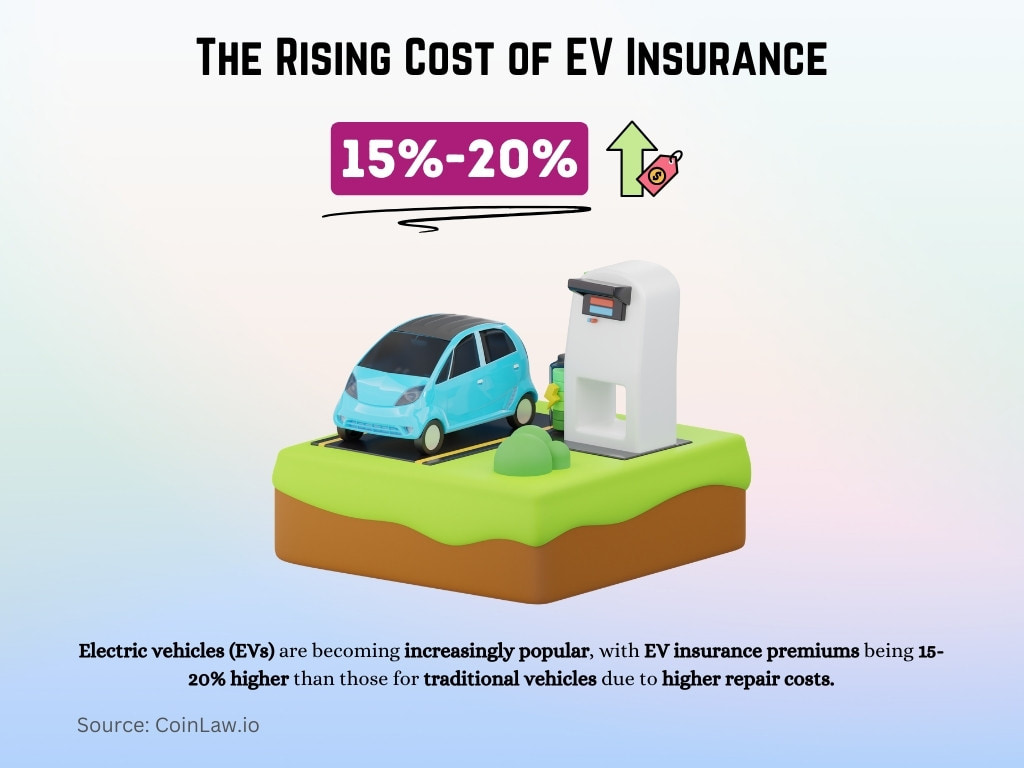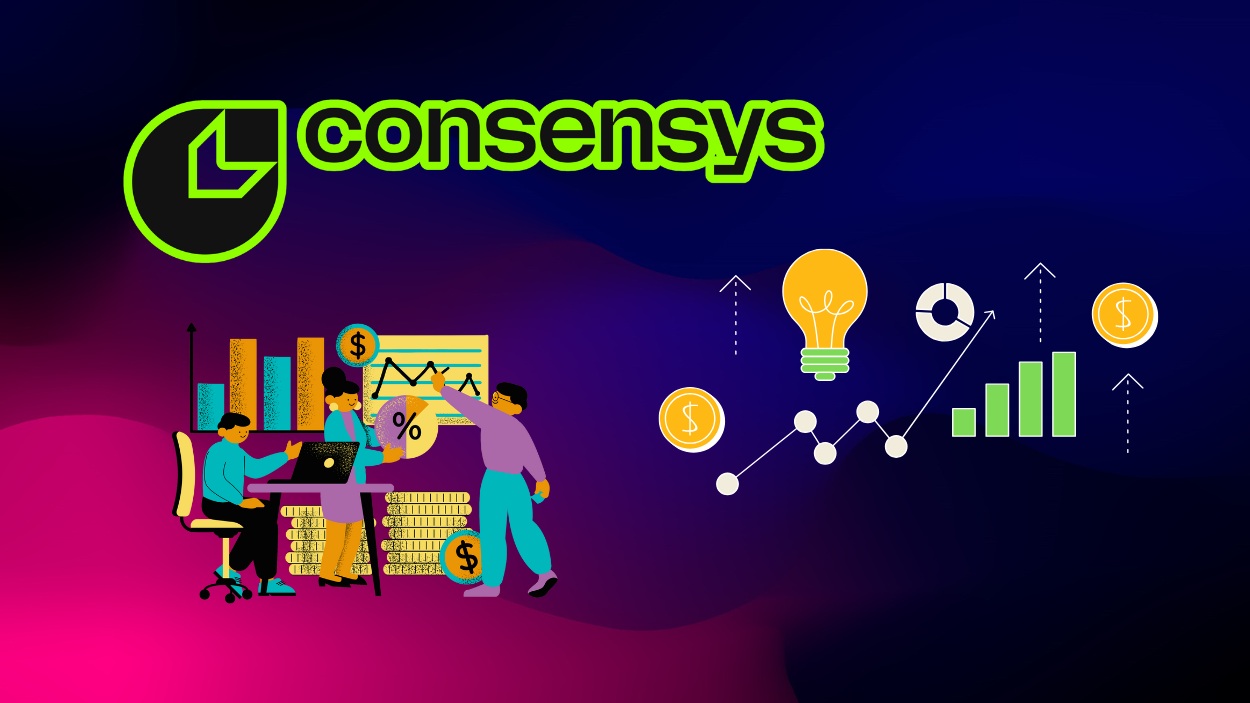The auto insurance industry in 2025 is evolving rapidly, shaped by technological advancements, shifting demographics, and changes in vehicle ownership patterns. In the past decade, factors like electric vehicle adoption, changing consumer preferences, and state regulations have driven significant fluctuations in premiums and coverage options. As we navigate the landscape of auto insurance, it’s essential to understand the key statistics shaping the industry this year. This article will provide you with comprehensive insights into market trends, premium rates, claims, and the impact of electric vehicles (EVs) on insurance costs.
Editor’s Choice: Key Auto Insurance Statistics
- $973.33 billion: The projected size of the global vehicle insurance market in 2025, reflecting a compound annual growth rate (CAGR) of 7.03% from 2025 to 2034.
- 23% increase: Electric vehicle (EV) insurance premiums are, on average, 23% higher than those for traditional vehicles in 2025, primarily due to higher repair costs and specialized components.
- 50% of U.S. consumers: Half of U.S. drivers find auto insurance unaffordable in 2025, highlighting a significant challenge in the industry.
- $2,575: California continues to have the highest average annual auto insurance premiums in the U.S. in 2025.
- 26% adoption: Usage-based insurance (UBI) policies, which leverage telematics data to calculate rates, account for 26% of new auto insurance policies in 2025, up from 17% in previous years.
- Approximately 37 million: Estimated number of auto insurance claims filed in the U.S. in 2025, maintaining a steady rate compared to previous years
- $43.7 billion: Combined revenue of the top five auto insurance companies in the U.S. as of the first quarter of 2025, reflecting stable market leadership
Average 6-Month Car Insurance Premiums by Age Group
- Teens aged 16–19 face the highest premiums at $5,023 per 6-month period ,more than 2.5x higher than any other group.
- Drivers in their 20s pay an average of $1,989, still significantly above the national average.
- 30–39-year-olds enjoy a lower rate of $1,532, showing a notable drop as drivers gain experience.
- Rates continue to decline for 40–49-year-olds, averaging $1,474.
- The lowest average premium appears for those aged 50–59, at $1,365.
- Both the 60–69 and 70–79 age groups pay the same average rate of $1,384.
- Premiums begin to rise again for 80–85-year-olds, increasing to $1,880.

Market Size and Growth Trends
- The global vehicle insurance market is projected to reach $973.33 billion in 2025, with a compound annual growth rate (CAGR) of 7.03% from 2025 to 2034.
- North America continues to be the largest market, with the auto insurance sector generating approximately $344.11 billion in direct premiums written, accounting for about 35% of all reported property and casualty premiums.
- The Asia-Pacific car insurance market is expected to reach $191.05 billion in 2025, growing at a CAGR of 5.45% to reach $249.11 billion by 2030.
- The telematics-based auto insurance market is projected to grow at a CAGR of approximately 18.5% from 2025 to 2035, expanding from $3.54 billion in 2025 to $19.34 billion by 2035.
- The commercial auto insurance market is expected to reach $390.5 billion globally by 2033.
- The global insurtech market is projected to grow at a CAGR of 36% between 2025 and 2034, reaching $132.9 billion by 2034.
- Auto insurance premiums are expected to rise by an average of 7.5% in 2025, influenced by factors such as inflation, increased claims, and climate-related events.
Car Insurance Statistics by State
- The average annual premium for full coverage car insurance in California is $2,416, primarily due to high vehicle densities and traffic-related incidents.
- Florida’s average premium stands at $3,950, driven by a large number of uninsured drivers and frequent weather-related claims.
- Ohio maintains one of the lowest premiums in the U.S., averaging $1,792 annually, attributed to lower accident rates and favorable state regulations.
- In Texas, the average car insurance premium has risen to $2,627 in 2025, influenced by the state’s high accident frequency and weather impacts.
- New York car insurance premiums have reached an average of $3,848, reflecting the state’s no-fault insurance laws and dense urban areas.
- Michigan, previously known for its high premiums, now averages $3,375. Recent reforms in the state’s no-fault insurance laws have contributed to this adjustment.
- Alabama experienced a 5% rise in auto insurance premiums, averaging $2,082, due to an uptick in severe weather events and claims.

Premium Rates and Consumer Demographics
- Drivers under 25 pay over 80% more than those aged 30–45, with average annual premiums around $3,192 compared to $1,671 for middle-aged drivers.
- Female drivers pay approximately 4% less than male drivers, with average annual premiums of $1,207 for females and $1,258 for males.
- Households earning under $50,000 spend about 15% of their income on auto insurance, while higher-income households allocate around 9%, reflecting the disproportionate financial burden on lower-income families.
- Urban drivers face premiums that are up to 25% higher than those in rural areas, due to factors like increased traffic congestion, higher theft rates, and more frequent accidents.
- Senior drivers aged 65 and above have experienced an average premium increase of 7% in 2025, with those over 75 seeing annual increases between $185 and $352.
- Drivers with poor credit pay, on average, 105% more for full coverage car insurance than those with excellent credit, highlighting the significant impact of credit scores on premium rates.
- Married individuals often enjoy premiums that are 5–10% lower than single drivers, saving approximately $149 annually, as they are statistically less likely to file claims.
Age-related Statistics
- Teen drivers (ages 16–19) face the highest premiums, averaging $3,192 per year, due to elevated accident risks.
- Drivers in their 20s see reduced premiums, with 25-year-olds paying an average of $815 annually as they establish driving histories.
- Drivers in their 30s benefit from further decreased rates, with 35-year-olds averaging $692 per year, reflecting increased experience.
- Middle-aged drivers (ages 45–55) often receive the best rates, paying around $671 annually, due to lower risk profiles.
- Senior drivers (65 and older) experience a slight premium increase, averaging $680 per year, as insurers account for age-related risk factors.
- Young male drivers pay approximately $788 more annually than their female counterparts, largely due to higher accident rates.
- Drivers over 50 can obtain discounts up to 10% by completing safe driving courses, leading to significant savings.

Vehicle-related Statistics
- Electric vehicles (EVs) are becoming increasingly popular, with EV insurance premiums being 15-20% higher than those for traditional vehicles due to higher repair costs.

- Hybrid vehicle owners typically pay 7% less for insurance compared to owners of conventional gas-powered cars, as hybrids are often involved in fewer accidents.
- Luxury cars carry an average annual premium of $3,500, which is 2.5 times higher than the premium for a standard sedan due to the higher costs of repair and replacement.
- SUV drivers pay an average premium of $1,750 annually, reflecting the increased weight and potential for more severe accidents.
- Compact car owners enjoy the lowest premiums, averaging $1,100 per year, as these vehicles are often cheaper to repair and less likely to be involved in high-cost claims.
- Sports cars have some of the highest premiums, with owners paying $3,800 annually, reflecting their high speeds and greater accident risk.
- Pickup trucks generally have premiums of $1,500, with lower repair costs balancing the higher risk of accidents involving larger vehicles.
Auto Insurance Premium Trends
- Telematics-based policies grew by 18% in 2025, enabling safer drivers to reduce premiums by up to 30%.
- Usage-based insurance (UBI) adoption increased by 12%, particularly among urban drivers who drive less frequently.
- Bundling discounts for combining auto and home insurance offer savings up to 30%, with more consumers opting for package deals.
- Pay-per-mile insurance gained traction in 2025, allowing low-mileage drivers to save an average of $500 annually compared to traditional policies.
- Premiums for rideshare drivers (Uber, Lyft) increased by 28% due to the added risk of commercial use, prompting more drivers to seek specialized rideshare insurance.
- Climate-related risks led to a 6% rise in premiums for drivers in flood-prone or wildfire-affected areas.
- Advanced driver-assistance systems (ADAS), such as lane departure warnings and automatic braking, contributed to premium reductions averaging 5–10%, as these technologies lower accident likelihood.
Average Car Insurance Rates by Vehicle Use
- Farm vehicles have the lowest average rate at $1,465.
- Vehicles used for Pleasure driving are insured at an average of $1,548.
- Personal/Commuting use sees slightly higher premiums at $1,560.
- Business use has the highest average rate, costing $1,720 for insurance.

Impact of Electric Vehicles on Insurance Costs
- Electric vehicles (EVs) typically have 15-20% higher premiums than gas-powered vehicles due to their higher repair costs and expensive battery systems.
- Repairing an EV battery can cost up to $16,000, significantly raising claim costs when these components are damaged.
- EVs are involved in fewer accidents on average, which has led to a 5% reduction in premiums for safe EV drivers using telematics-based policies.
- The increasing number of EV repair shops has the potential to lower repair costs over time, but the market is still catching up with demand.
- Tesla continues to dominate the EV insurance market, with average premiums of $2,500 annually, though some models cost as much as $3,000 to insure.
- EV theft rates are lower than those of conventional vehicles, contributing to lower comprehensive coverage costs for certain models.
- The growing popularity of EV-specific insurance policies has allowed more tailored coverage options, offering benefits like charging station access or roadside assistance specifically for EVs.
Global Share of Insurance Providers by Country
- The United States leads with the highest share of insurance providers at 39.69%.
- China ranks second, accounting for 30.28% of global insurance providers.
- Japan holds 16.54%, making it the third-largest contributor.
- India represents 13.49% of the total insurance providers globally.

Auto Insurance Affordability
- 50% of U.S. consumers now find auto insurance unaffordable, especially in states like California and Florida, where premiums are highest.
- On average, Americans spend 2.44% of their annual income on auto insurance, with low-income households paying as much as 15%.
- Telematics-based insurance has helped reduce costs for safe drivers, offering potential savings of up to 30%.
- Uninsured motorist fees and fines continue to rise, costing drivers an average of $500 annually in penalties and surcharges.
- State-regulated insurance programs in high-risk areas, such as Louisiana, have seen premiums rise by 7% due to increased claims from natural disasters.
- Low-income drivers in urban areas often struggle with higher premiums, paying up to 50% more than rural drivers with similar risk profiles.
- Subsidized insurance programs in some states are helping low-income drivers obtain basic coverage, reducing the risk of driving uninsured.
Largest Auto Insurance Companies
- State Farm leads the U.S. auto insurance market with 18.9% share and $65.9 billion in direct premiums written.
- Progressive holds 1a 6.7% market share, writing $56.8 billion in direct premiums, marking significant growth.
- GEICO (Berkshire Hathaway) commands 11.6% of the market with $41.3 billion in direct premiums written.
- Allstate maintains a 10.2% market share, generating $35.6 billion in auto insurance premiums.
- USAA, serving military families, holds 6.2% of the market with $21.8 billion in direct premiums written.
- Liberty Mutual writes $12.7 billion in direct premiums, capturing 3.3% of the market share.
- Farmers Insurance accounts for 3.8% of the market with $13.7 billion in direct premiums written.
- American Family Insurance holds a 1.7% market share, writing $6.1 billion in direct premiums.
- Travelers secures 2% of the market with $7 billion in direct premiums written.
- Nationwide rounds out the top ten with 1.7% market share and $5.4 billion in direct premiums written.

Recent Developments
- Insurtech companies like Metromile and Root continue to disrupt the market with pay-per-mile and behavior-based policies, offering up to 60% savings for low-mileage drivers.
- Artificial Intelligence (AI) and machine learning have accelerated claims processing, reducing resolution times by up to 75% and enhancing fraud detection with 99.9% accuracy.
- EV-specific insurance policies are expanding, now commonly including battery replacement and charging station coverage, addressing the unique needs of electric vehicle owners.
- California’s Low-Cost Auto Insurance (CLCA) program continues to provide affordable coverage for income-eligible drivers, with ongoing legislative support to enhance transparency and accessibility.
- Blockchain technology is increasingly utilized in insurance for secure, transparent claims processing, effectively reducing fraud and improving customer trust.
- Self-driving cars are influencing the industry, with studies showing Waymo’s autonomous vehicles reducing property damage claims by 88%, prompting insurers to reassess liability frameworks.
- The National Association of Insurance Commissioners (NAIC) is developing new regulations for telematics data usage, aiming to balance innovation with consumer protection and privacy.
Conclusion
The auto insurance industry is undergoing significant transformations, driven by the rise of electric vehicles, advanced technologies, and evolving consumer behaviors. While challenges like rising repair costs, climate change risks, and the increase in uninsured drivers put pressure on profitability, innovations such as telematics and AI are helping insurers navigate this complex landscape. As the market continues to grow and evolve, particularly with the adoption of EV-specific policies and insurtech solutions, companies that embrace digital transformation and customer-centric products will thrive. The future of auto insurance will undoubtedly be shaped by advancements in autonomous driving, blockchain technology, and data-driven policies, promising a dynamic and rapidly changing environment for both insurers and consumers.
Hover or focus to see the definition of the term.


























































